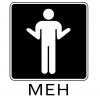Il-62M shows 25% depreciation, and Il-86 is at 14% in 1991... ![]()
Maybe I don't know enough about depreciation but that seems very steep. Is it based in reality or just a random number?


Il-62M shows 25% depreciation, and Il-86 is at 14% in 1991... ![]()
Maybe I don't know enough about depreciation but that seems very steep. Is it based in reality or just a random number?

Il-62M shows 25% depreciation, and Il-86 is at 14% in 1991...
Maybe I don't know enough about depreciation but that seems very steep. Is it based in reality or just a random number?
Looks like random numbers... If the expected life of an aircraft is, let's say, 20 years, with linear depreciation it should be 5% yearly.

Looks like random numbers... If the expected life of an aircraft is, let's say, 20 years, with linear depreciation it should be 5% yearly.
Correct me if I am wrong but I thought the aircraft were depreciated on a reducing balance basis, not linear.

Depreciation is mostly influenced by demand for second hand aircraft.
And just to be clear, depreciation is never linear !
Just compare the similarly sized A300 with the Il-86 :
A300 is worth $110,000,000 and will be worth $42,835,773 after 10 years.
That's 38.9% of the new value.
Owning Cost for 10 years : $67,164,227
Il-86 is worth $90,000,000 and will be worth $19,917,142 after 10 years.
That's 22.1% of the new value.
Owning Cost for 10 years : $70,082,858
The reason for this difference is that there will be a lot more interest for the A300 than for the Il-86.
These numbers of depreciation are based on real life situation, where the demand for a second hand Il-86 is virtually non-existing.
And while you can 't compare AE to real life aviation, the game has always based its data on real life aviation (manufacturers, aircraft types, fuel burn, range, airports, airport traffic, ...).
For flying cow, when you correctly want to calculate depreciation, you'll need the following formula :
(new aircraft value) * ( (1 - depreciation rate) ^ (number of years) )
so for Il-86 that would be 90,000,000 * (1-0.14)^20 if you want to see what it's worth after 20 years.

It's a s***ty aircraft. Nobody wants to operate it in real life. That's why.

Depreciation is mostly influenced by demand for second hand aircraft.
And just to be clear, depreciation is never linear !
Just compare the similarly sized A300 with the Il-86 :
A300 is worth $110,000,000 and will be worth $42,835,773 after 10 years.
That's 38.9% of the new value.
Owning Cost for 10 years : $67,164,227
Il-86 is worth $90,000,000 and will be worth $19,917,142 after 10 years.
That's 22.1% of the new value.
Owning Cost for 10 years : $70,082,858
The reason for this difference is that there will be a lot more interest for the A300 than for the Il-86.
These numbers of depreciation are based on real life situation, where the demand for a second hand Il-86 is virtually non-existing.
And while you can 't compare AE to real life aviation, the game has always based its data on real life aviation (manufacturers, aircraft types, fuel burn, range, airports, airport traffic, ...).
For flying cow, when you correctly want to calculate depreciation, you'll need the following formula :
(new aircraft value) * ( (1 - depreciation rate) ^ (number of years) )
so for Il-86 that would be 90,000,000 * (1-0.14)^20 if you want to see what it's worth after 20 years.
That sounds really interesting! Thank you for clarifying ![]() I though the amortization rates where somehow fixed and given usually by tax authorities for fiscal purposes, so the firm has little to say about it. Moreover, given that the demand for 2nd hand goods fluctuates that would also involve that the depreciation rate would fluctuate from one year to another, which seems strange from the accounting perspective.
I though the amortization rates where somehow fixed and given usually by tax authorities for fiscal purposes, so the firm has little to say about it. Moreover, given that the demand for 2nd hand goods fluctuates that would also involve that the depreciation rate would fluctuate from one year to another, which seems strange from the accounting perspective.
I can see how amortization/depreciation could be linked to the number of hours that an aircraft is operated (like milage in cars), but I still hesitate to see how it can be linked to the demand on the 2nd hand market for that good. Just to be on the same page - we are talking about accounting amortization and not the market price at the moment of putting the aircraft for sale (as that would be given by supply and demand and any difference between sale price and accounting value will be taxed as profits).

It's a s***ty aircraft. Nobody wants to operate it in real life. That's why.
FINALLY SOMEBODY GETS IT




Moreover, given that the demand for 2nd hand goods fluctuates that would also involve that the depreciation rate would fluctuate from one year to another, which seems strange from the accounting perspective.
In real life, these fluctuations are minor. A good aircraft will have pretty constant depreciation rate. The major influences for actual fluctuations are for instance the availability of newer, more modern aircraft. Like how in real life the 737-400 depreciation rate almost doubled when 737-800's became available second hand.
This depreciation has nothing to do with the taxes a company pays. Yes, the company can financially write off the aircraft in terms of taxes, where they add part of the aircrafts purchasing cost to their expenses each year. However, the depreciation rate in AE purely revolves around the residual value of the actual airframe over time.

...This depreciation has nothing to do with the taxes a company pays. Yes, the company can financially write off the aircraft in terms of taxes, where they add part of the aircrafts purchasing cost to their expenses each year. However, the depreciation rate in AE purely revolves around the residual value of the actual airframe over time...
Ehhm... Depreciation/Amortization of assets lower your income statement and, therefore, lowers your tax base so it does affect directly the taxes a company end up paying for a given fiscal year...
And a company cannot just "write off" the asset (aircraft) in terms of taxes - the purchasig cost of a new aircraft goes as investment and does not diminish your taxes the year you bought the asset except for the depreciation/amortization that is accounted for that year. And the residual value of any asset in the books of the company is nothing more than "Initial asset value - amortizations". I though accounting rules apply everywhere and in every industry.
0 members, 0 guests, 0 anonymous users